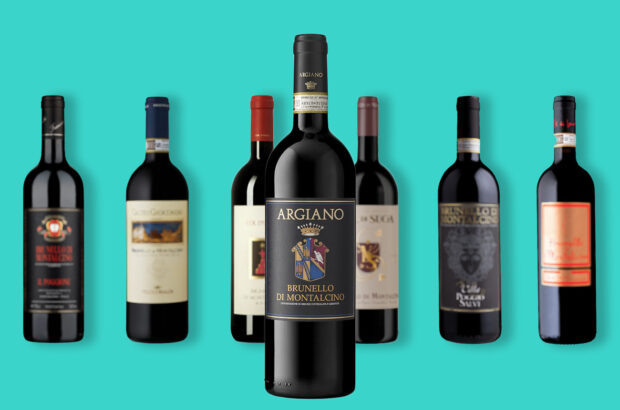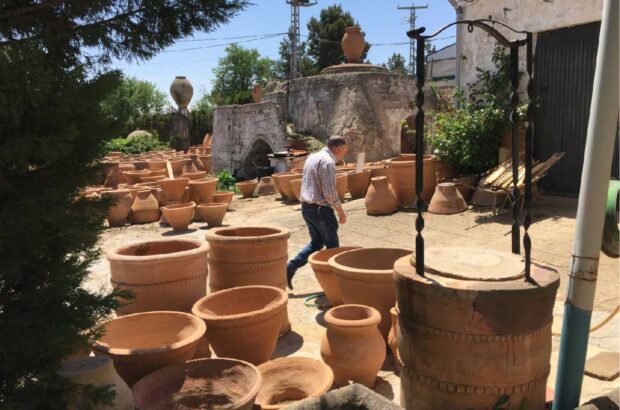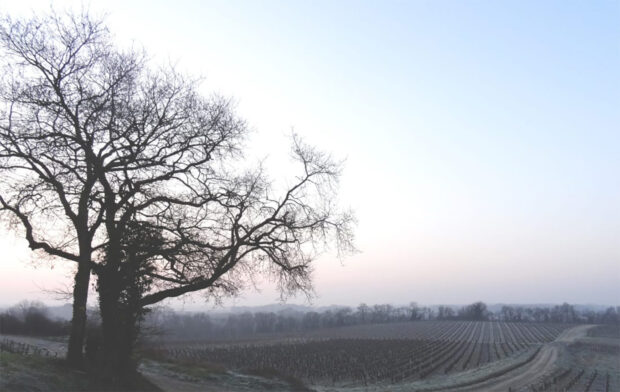- The island is famed for its Pecorino cheese and its sheep rustlers.
- There are four principal grape varieties based on the whims of past visitors.
- Last year’s harvest could be the vintage of the decade.
- Sardinian version of Sherry – Vernaccia di Oristano.
‘Beware of the local brandy!’ an Italian friend warned me recently, as I left for a trip to Sardinia. Brandy sounded like overkill from what I’d heard of the island’s wines; the worst were reputedly crude head-thumpers of fearsome strength. But, as I soon learnt, the truth is very different. Without losing any of its individual character, Sardinian wine has been brought to heel by cool fermentation. On this voyage of discovery I met an eclectic jumble of different styles that have evolved at their own pace, free from flying winemakers and Italian industrialists. In place of ‘kiwi fruit Chardonnays’ and tedious Trebbianos are a string of delightful oddities, full of personalities that you won’t find anywhere else.
The first thing that strikes you about Sardinia is that it hardly seems part of Italy at all. The natives may speak the same language, support the national team and even fly the same flag, yet as DH Lawrence wrote: ‘This is an island that belongs to nowhere … lost between Europe and Africa.’ That was in the 1920s, but there’s still a deep, almost tangible, sense of isolation, of being adrift at sea, eight hours by ferry from the mainland.
Sardinia was invaded almost constantly by Carthaginians, Byzantines, Pisans and whoever else held sway in the Mediterranean until the Spanish arrived in the 14th century . They stayed for 400 years and left a deep, lasting imprint on the architecture, local dialects and, not least, the wines. After that, Sardinia slid off into the backwaters to stew in its malarial fevers until the 1950s, when US marines drenched the island with enough DDT to banish the disease forever. The island is famed for its Pecorino cheese and its sheep rustlers, and today’s invaders come in mid-summer, armed with credit cards and beach towels. For the rest of the year you would have Sardinia’s rugged beauty largely to yourself.
Most of the wines available nowadays are based on the whims of past visitors. It’s funny to think of an early Phoenician or latter-day conquistador grabbing at a few cuttings or seeds as last minute packing before setting off to trade or wage war. In this respect Sardinia has been quite lucky with its four principal grape varieties: Nuragus and Vermentino for the whites, Carignano and Cannonau for the reds. In fact, the simplest way to understand Sardinian wine is to take each in turn, since they are usually made in purezza as pure varietals.
Nuragus was brought to the island by the Phoenicians some time after the 10th century BC. During the 1950s and 1960s, it was a popular source of vin de clochard, exported to Marseilles in bulk. Then, in 1975, Sardinia got a bad press on being awarded the highest permitted yield of any DOC wine in Italy, which provoked howls of righteous indignation. In the last few years the Cantina Sociale di Dolianova, the biggest producer of Nuragus, has done much to improve this humble wine by reducing yields and picking earlier. By appearance, Dolianova is not exactly a boutique winery, more a Soviet-style colossus of mass production. Yet behind the scenes, they have been working hard to bolster the fragile character of the wine and protect it from the perils of oxidation. The result is faintly herbal and delightfully crisp.
Vermentino’s homeland is in northern Sardinia, amid the cork forests and granite mountains of Gallura. The vine is thought to be a strain of Malvasia and to have arrived from Spain via Corsica – a short hop across the straits of Bonifaccio. The vineyards of Gallura are at 300 metres or more, in the shadow of jagged peaks that seem to stretch up to snag the passing rain clouds. It is far greener and cooler than elsewhere, one reason why Vermentino di Gallura, the island’s first DOCG wine, can be so lush and fragrant. The climate is such that you will even find the occasional vineyard of Nebbiolo, making Gallura one of the few places outside Piemonte to grow this wonderful vine. Until recently the predominant style of Vermentino was the superiore, an unbalanced bruiser of 15 degrees or more. Now, from producers like the Cantina Sociale di Gallura, Vermentino displays a succulence of fruit and blossom that appears most unItalian for a white wine.
To my mind, the best indigenous red is Carignano, grown in the scorched vineyards of the southwest, principally to supply the Santadi cooperative. By reverting to the traditional albarello system of training the vines in little bushes close to the ground, and by choking them of water, Santadi has managed to cut yields dramatically. Helped by Giacomo Tacchis, one of the gurus of modern Italian wine, the coop is producing rich, invigorating reds such as Rocca Rubia and Terre Brune. Even the most basic Carignano di Sulcis, as the DOC is known, is streets ahead of the tannic mouthwash made from the same grape in the French Midi. The 1993 Terre Brune has a jammy spiciness to it with the sweet taste of oak and some relatively firm tannins. However, the news from the vineyard is that last year’s harvest could be the vintage of the decade.
Available throughout Sardinia is another Spanish immigrant, Cannonau, which is none other than Garnacha or Grenache. Over the course of some 200 or 300 years Cannonau has gone native and developed its own Sardinian flavour. Its traditional homeland has been to the east around the town of Nuoro, famed for its bandits and poets, though as yet little has seeped out even as far as the mainland. More in evidence is the Cannonau di Sardegna DOC produced by Sella & Mosca on their massive 500 hectare estate near Alghero in the northwest. They also make an oak-aged riserva where the fruit may have been fighting a losing battle with the wood. It can help having other varieties to blend in, like the use of Tempranillo in Rioja to overcome the grape’s occasional lack of tannin and tendency to blowsiness. Good examples of this include Meloni Vini’s Jerru and Sella & Mosca’s Tanca Farrà which both use a generous dollop of Cabernet Sauvignon. Meanwhile the producer Argiolas has had success with a blend of Cannonau, Malvasia Nera and Carignano, which is poured into new French barrels, left for a couple of years and then given the name Turriga.
For something completely different, an antidote to fat, over-oaked Chardonnays, you could try the cholesterol-free Torbato. This bone dry, slightly hollow white wine with a salty tang is known as Muscat de Roussillon in France, where it has long been extinct. Torbato is now only grown commercially by Sella & Mosca. The firm’s vineyards fan out in immaculate rows from the central cantina and include a few dozen hectares of Cabernet Sauvignon to make one of the best examples in Italy – Marchese di Villamarina. Sella & Mosca’s most famous wine is a passito-liquoroso, a Port-like fortified wine named Anghelu Ruju. It has been made from Cannonau ever since experiments with cuttings from Portugal’s Alto Duoro proved unsuccessful in the 1920s. Better still, there is Monteluce produced from the indigenous white grape Nasco. All I can read from my notes (it was right at the end of a long tasting) is the word ‘fungal’ which sounds horribly like athlete’s foot! However, from memory, the wine was beautifully complex with the sweet scent of moss and honey and much nicer than the local Malvasia, which can be rather cloying. Finally, there is a curious red pudding wine called Girò with a taste of liquorice and cherries, made by Meloni among others.
Of comfort to homesick Hispanics is the Sardinian version of Sherry called Vernaccia di Oristano. This Vernaccia, no relation to its namesake from San Gimignano, is grown on the arid, limestone soil of the Tirso Valley in western Sardinia. It makes a brackish coloured wine with the characteristic taste of flor due to ageing in open casks of chestnut or oak. However, what was once Sardinia’s most famous wine is now heading for the endangered species list. It has suffered because of recent droughts and EU payments for grubbing up vines, which together have helped slash the island’s wine production by three-quarters in the last two decades.
The Sardinian winemakers who survived these years of crisis are pretty much committed to quality, and there are renewed signs of optimism, not least because of last year’s excellent harvest. Little by little, more Sardinian wine is beginning to trickle abroad. Yet to fully appreciate the island’s rich diversity, from the supple delights of Vermentino to the earthy charm of those warm-blooded reds, nothing beats a visit to the island itself. As for the brandy, you have been warned, it’s not called fil e ferru, or barbed wire, for nothing.











